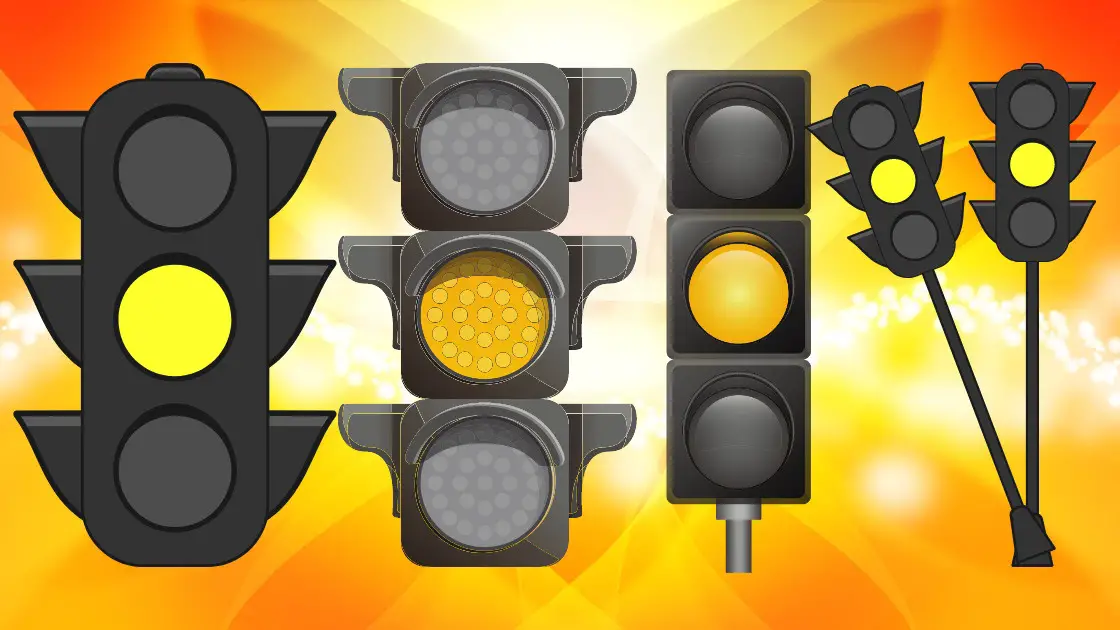Yellow Light – There seems to be a lot of confusion about this
Ah the yellow light. Traffic light, that is. Everyone knows about the green light and the red light, I think. But it seems, over time, people forget about the true meaning of the beautiful amber traffic light.
Especially when you simply observe many drivers, who seem to think this means ‘speed up and race through the intersection, never to be seen again.’ Um, no. Let’s talk about this because it’s kinda important. Legally, yellow means, “Stop, unless you can not safely stop in time.”
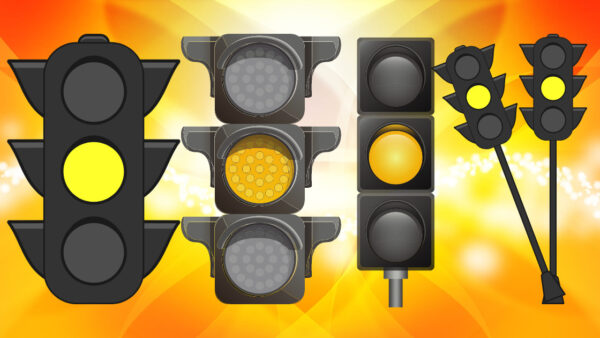
What Does The Yellow Mean?
If you are just driving along and your light goes yellow, it means Stop; unless you can not safely stop in time.
You can read about it here, straight out of the Motor Vehicle Act.
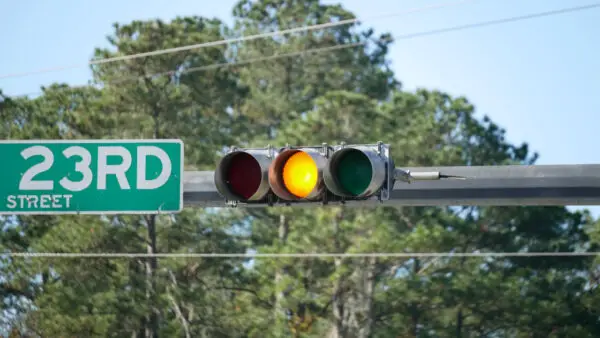
Why would you not be able to stop in time?
If you don’t think it’s safe to stop because the vehicle behind you is driving too closely, then maybe you should keep going. Especially if you believe that by stopping, you would be rear-ended.
However, if you get into a collision, you must prove that it was unsafe to stop for your yellow light. And personally, I’m not sure how you would do that. Maybe with a dash cam.
So, it is best to avoid speeding, anticipate traffic lights changing, and generally be prepared.
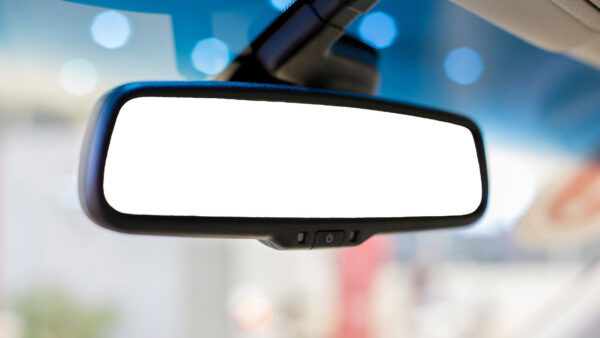
What does ‘be prepared’ mean?
Well, it’s a combination of things. It means covering your brake if you are near the intersection and you think the light might change to yellow.
Covering the brake means hovering your foot above the brake pedal but not actually touching it yet. If the light goes yellow, you’re prepared. You’ll be that much quicker to stop.
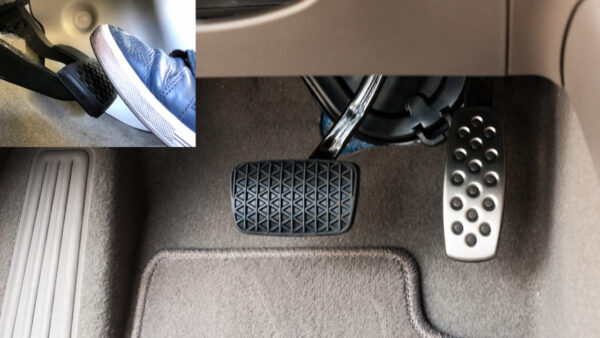
The time it takes for your foot to move from the gas (or wherever it was, sometimes it’s nowhere) to the brake, counts.
Being prepared also means being aware of what’s behind you. If there’s a vehicle following too closely and it’s unsafe, do something about it, before the intersection.
You could pull over and let it go. You could change lanes if that’s the right option. Or, you could simply slow the speed of your vehicle if you think it’s too fast, depending on conditions of course.
The car behind can’t control the speed of your vehicle, you do. So, you could slow down a bit before the intersection. This way, if you do stop, you won’t be rear-ended.

By slowing a bit, you’re getting the vehicle behind to slow a bit, too.
Safety At Yellow Traffic Light Intersections
It’s always good to be prepared. This way, you don’t have to feel like the only two choices are getting rear-ended or driving through a yellow signal light that you shouldn’t.
I don’t need to mention that running a yellow light can potentially get you into huge trouble, too, with an oncoming left-turning vehicle. And those collisions aren’t particularly pretty.
Always check your rear-view mirror well in advance of the intersection. It’s good to check your rear-view mirror frequently, anyways.
Turning Left Or Right & The Light Goes Yellow
If you are turning right or left at an intersection, the same rules apply.
If the light goes yellow on approach, then you should stop behind the white line, as long as it is safe to do so.
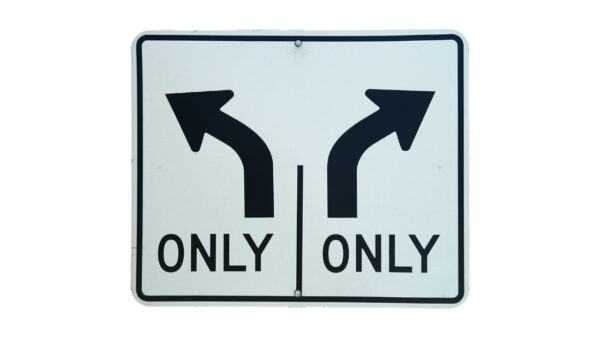
Turning Right On a Red Light
You may be able to turn right on a red light, or left on a red light if turning onto a one-way street.
But legally, you must stop first if you are facing a yellow (or red light) and yield to those with green lights.
If you’re turning left or right at an intersection, and you have already entered the intersection when the light was green, and then it changes to yellow, then it is a different story. You must then clear the intersection when it is safe, regardless of the traffic light color.
How can you tell if the light will change to yellow soon?
See this: How to tell if the light will change soon

Q: If my light is yellow, what olour is the light for the traffic facing me?
What Does A Flashing Yellow Light Mean?

A flashing yellow light basically means you can proceed through the intersection, but with extra caution. Drivers must yield to pedestrians lawfully in the intersection or adjacent crosswalks.
In other words, maybe slow down a bit and be careful, pay extra attention because there may be other traffic around the intersection.
In my experience, yellow flashing lights are sometimes found at intersections when a traffic light is malfunctioning.
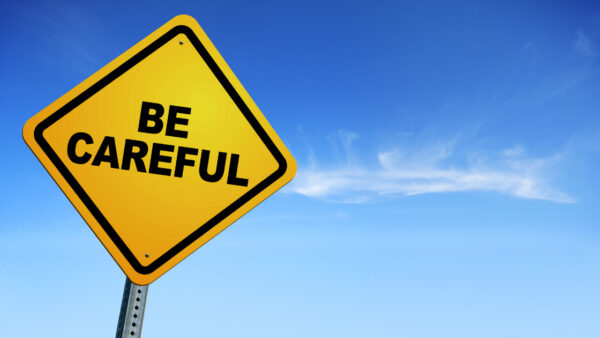
Or, simply when the other traffic may be facing a flashing red light, which is basically the same thing as a stop sign.
Right Of Way at Amber Traffic Light Intersection
Yellow Lights & Left Turns & Right Turns
Question: Right of way in an intersection question. If car A is in an intersection turning left and car B is turning right coming from the opposite direction, and the light turns amber, car B has the right of way to turn then followed then by car A correct? If there is a car C behind car B who also tries to turn right directly after car B turns right, does car C also have the right of way before car A turns? My understanding is that if there is an amber light and since car C is not already in the intersection when it was a green light, then car C does not have the right of way. They need to stop at the intersection before proceeding to turn right as long as it is safe to do so. Is this correct?
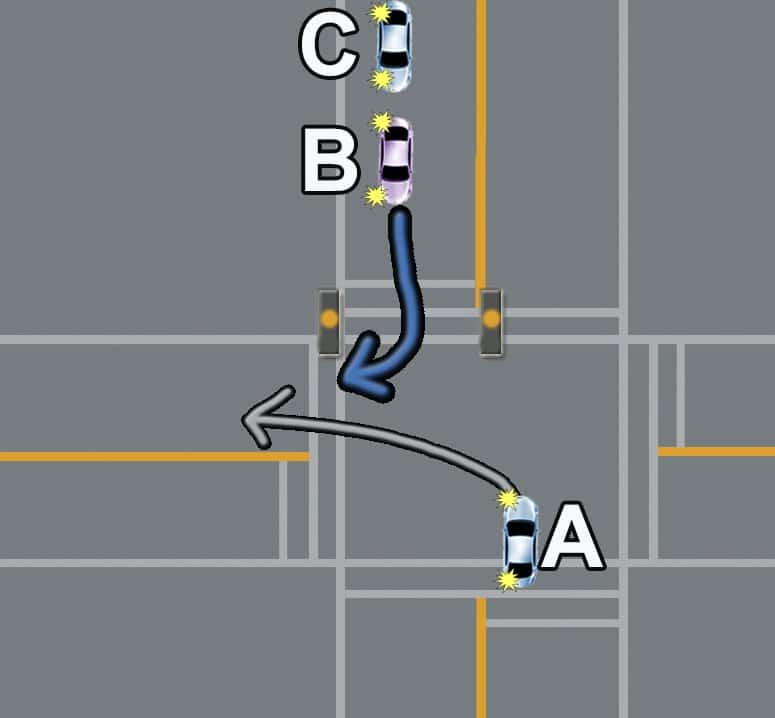
The short answer is
The short answer is: The only time Car ‘B’ has rights to go before Car ‘A’ is when the light is still green, or, if the light has gone yellow and Car ‘B’ is past his point of no return and can not safely stop the vehicle before the stopping line due to its speed (which should be kind of slow anyway if he’s planning a turn yes?), the proximity to the intersection, the unsafe/too close vehicle behind him, or the weather/road conditions.
The long answer is:
Traffic Lights Control Who?
Technically speaking, traffic lights control vehicles (or are legally supposed to control traffic) that are approaching the intersection; not ones that are already inside the intersection.
Once inside the intersection
Once already inside the intersection – or appropriately pulled forward into it – it is the job of the left-turning vehicle to turn only when absolutely safe to do so, regardless of the colour of the traffic light. The traffic light has no legal consequences for that vehicle nor does it intend to control it. Having said that, this is by no means a ticket for the right-turning cars to do whatever the $%^ they want and leave the left-turn car hanging in the middle of the intersection forever. That would be rather rude wouldn’t you say.
The Motor Vehicle Act on Yellow Lights:
Yellow light
128(1) When a yellow light alone is exhibited at an intersection by a traffic control signal, following the exhibition of a green light,
(a) the driver of a vehicle approaching the intersection and facing the yellow light must cause it to stop before entering the marked crosswalk on the near side of the intersection, or if there is no marked crosswalk, before entering the intersection, unless the stop cannot be made in safety,
Right of Way Language Disclaimer
We also must watch our language here. It is dangerous to assume that someone “has the right of way.” This makes it sounds like you can always just assume that you can go in certain circumstances. In the laws (and in practice, I would recommend to think more like this), the language describes situations in which one vehicle should yield to another; not that it’s actually going to happen. This implies that while of course there is a certain thing that is supposed to happen, it’s still your job to observe what is actually happening and react to prevent a collision, regardless of which driver may have done something they were perhaps not supposed to have done; or even at times when there may have been a perceived grey area in which drivers were not 100% sure what to do and so they just ‘rolled with’ a decision. No pun intended. Ok it kind of was.
Right of Way Basics
Clearly, the law says that Car ‘B’ and ‘C’ must stop before the intersection unless the stop can’t be made safely. So as long as they can stop, then they should, and then Car ‘A’ can go. If it can’t be made safely, then Car ‘B’ can complete their turn while Car ‘A’ yields and then turns directly after.
Car ‘C’
Car ‘C’ is definitely required to stop before the intersection. I can not really imagine a case where Car ‘C’ would not be able to stop in time. Cars must slow down before turning right anyway, so the ‘point of no return’ will be much closer to the intersection at 20 or 25 km/hr when compared to a regular car who is planning on going straight through the intersection; the speed of that car might be more like 50 km/hr. Not to mention, there should be at least 2-seconds of space between Cars ‘C’ and ‘B’; add the car length of car B onto that and the guy has 3 seconds to stop. That’s oodles of time if you ask me. Even if ‘C’ is following too closely I can’t really imagine how it would not be able to stop in time. It really has no right at all to turn the corner without stopping at the line and yielding AT LEAST to Car ‘A’, first; not to mention any pedestrians and traffic who will then be facing a green light & walk signal after that.
Red & Yellow Traffic Lights
Yellow means Stop. But Red Light also means stop and yield to everyone; don’t forget that!!
Car ‘B’
Car ‘B’ might be able to make a case for completing his turn due to being past the ‘point of no return,’ however, likely it will be slowing down before turning anyway. So if it is very close to the turn and it is actually past the point of no return, then – well this is just my opinion – it will be already long gone by the time the driver of Car ‘A’ even has a chance to move their foot from the brake to the gas and/or start rolling through his turn. Otherwise, it should stop before the line and Car ‘A’ can go as soon as the driver is certain it is cool.
Please drive safely everyone
Thank you for the great question, Van.
Conclusion
Yellow means stop. And it’s a hard thing to prove to a judge that your idea to go through a yellow light was a good one. It can be helpful to learn everything you can about yellow lights.
And familiarize yourself with how vehicle speed can affect stopping distance. Intersections are the most common place where crashes occur. For this reason, the yellow light thing is very important.
To be a safe driver you need to know what to do when the light goes yellow. And the right thing to do depends on so many things.
Drive safe!
